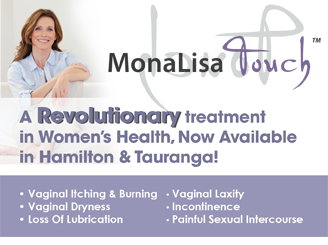Sterilisation
Patient Information Leaflet on Having a Laparoscopic Sterilisation.
You are due to be admitted to Hospital for a laparoscopic sterilisation to be done on _____________. It is essential that you continue with your current form of contraception both before your operation and until the first period that occurs after the operation. This is to ensure that you don’t fall pregnant just before or immediately after the operation. If you have not followed these instructions then I may have to rearrange your admission unless the operation is being done in the first half of your cycle. I would also like you to know if you have any worries or questions about your operation, please feel free to telephone me on the above numbers.
THE OPERATION
The operation is performed under a general anaesthetic. A laparoscopy is an examination of your abdomen using a telescope. The telescope is passed through a small cut in your abdomen just below your tummy button. The doctor can see your womb, ovaries and fallopian tubes when he passes some gas into your abdomen. Another small cut is made on your bikini line for instruments to be passed into the abdomen. During the operation a metal clip is placed onto each fallopian tube. These clips cause an IRREVERSIBLE blockage of the tubes so that an egg and sperm cannot meet. There is a small FAILURE RATE of between 1 in 300 to 500.
AFTER THE OPERATION
When the anaesthetic has worn off you may be in pain. The pain can be like a strong wind pain which may be felt in your abdomen, neck and shoulders. I like to act early to reduce your pain. You can help me to do this by telling us how strong the pain is.
We use a pain score numbers 0 – l0
( 0 = NO PAIN ) ( l0 = VERY STRONG PAIN )
I can give you pain killers in hospital and you will be offered pain killers to take home with you. Usually Paracetamol is adequate. You may take Paracetamol every 4 hours if needed but no more than 8 tablets in 24 hours.
I suggest you should have someone to collect you after your operation. Please remember that you must not drive or operate machinery for 24 hours after a general anaesthetic. It is essential that you are not alone on the first night after your operation. You should not drive until you can sit comfortably in the seat with the seat belt across you. You should be able to turn your body as though to reverse and you must be able to do an emergency stop.
You should try to have 3 days of rest with no heavy lifting or strenuous exercise. You should be aware that you may need up to a week off from work after a laparoscopy.
In general there is little bleeding after a laparoscopy, You should use sanitary towels initially and then tampons if there is no discomfort and the bleeding is not heavy. If you have heavy bleeding, bad pains, a smelly vaginal discharge or a temperature you should contact me or your doctor.
It is important to prevent any infection after your operation. Good personal hygiene is important. The day after your operation you should take a bath or shower and remove the plasters on your cuts. Check that the cuts are clean and dry. This will help them heal. Only cover your cuts if they continue to appear moist. Where possible continue with a daily bath or shower. I also advise that you do not have sexual intercourse for 1 week, or until the bleeding has stopped. After a laparoscopy there is a possibility of getting a urine infection. Watch out for cystitis and if it does occur drink plenty of fluid. If symptoms persist contact me or see your G.P.
The risks of this procedure are minimal, but very occasionally a small hole may be made in the womb or bowel. If this happens I may need to make a cut on your abdomen to repair the hole. This will mean that you will have to stay in hospital for a few more days.
Occasionally there may be a fair amount of Bruising (blue-black) around the skin incisions. These usually disappear completely in 3 to 4 weeks.
The commonest symptom following the procedure is shoulder tip pain. This pain is actually referred from the diaphragm. The diaphragm has the same nerve supply as your shoulder tip, and is stretched when gas is put into the abdomen. This stretching causes the pain that you feel.
DISCHARGE FROM HOSPITAL
It is aimed that the procedure is done as a day stay and most patients go home the same day.
If you have problems such as bad pain, increased bleeding, temperature, or generally feeling unwell please contact me or your GP. Remember to keep this leaflet to show to your GP.
PLEASE BRING THIS LEAFLET WITH YOU WHEN YOU ARE ADMITTED
PERMISSSION TO REPRODUCE THIS LEAFLET IS GIVEN AS LONG AS ACKNOWLEDGEMENT IS GIVEN TO NAYLIN APPANNA.





